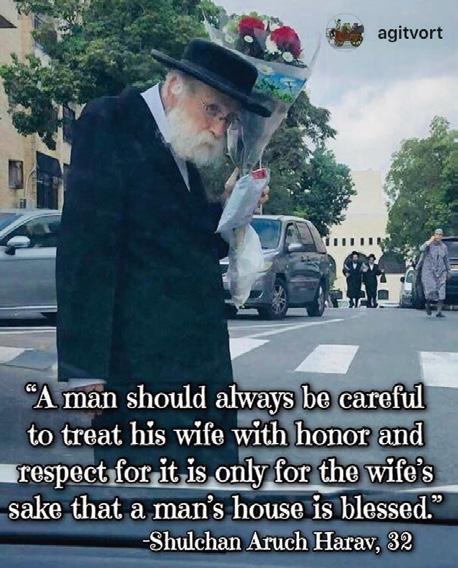
3 minute read
Did Moshe Rabeinu, the closest
from 243. Ki Sisa
by Oneg Shabbos
The Gemora (Berachos 55a) reports a conversation between Moshe and Betzalel about the Mishkan. Moshe told Betzalel first to build the keilim (vessels) and then the outer housing [i.e the planks and the coverings etc]. Betzalel responded, “Moshe Rabbeinu, the way of the world is first to build a house and then put the keilim in, and yet you are telling me to do the opposite. Where will I put the keilim [if I make them before the outer housing]? Perhaps Hashem actually told you first to make the outer housingand then the keilim?” Moshe responded to Betzalel: “Perhaps you were in the shadow of Hashem [betzel-Kel] and you knew”.
This passage is clearly puzzling, on several fronts:
Advertisement
1. Did Moshe Rabeinu, the closest ever ‘talmid’ of the Ribono shel Olam, really forget the basic detail of the order in which to build the Mishkan?
2. The Mishkan was a miraculous place in which the Shechinah rested, so why did Betzalel bring a proof to the correct order of construction based on the ‘way of the world’? In fact, we find elsewhere (see Menachos 86b) that instructions in the Mishkan often deviated from the worldly norm, lest people think that that this was a house that Hashem ‘needed’.
3. What type of compliment did Moshe give Betzalel at the end of the conversation, that he was ‘in the shadow’, which is usually a pejorative term? The Ohel Yehoshua offers a beautiful explanation of this cryptic discussion. The Ramban, unlike Rashi, understands that the parshiyos in Sefer Shemos are written in chronological order. Klal Yisroel were given the mitzvah to build the Mishkan in Terumah and Tetzaveh, before the chet ha’egel (in this week’s parsha). Then, after the fallout from the chet ha’egel and Hashem’s decision to forgive, which culminated on Yom Kippur, came Vayakhel and Pekudei. Whilst Moshe’s tefillos were successful in getting the plan to build the Mishkan back in place, the status quo had nevertheless changed. The way of serving Hashem was now different. The Mesilas Yesharim (Chapter 5) writes that a person on a higher level is driven by his inner spark, which will spur him to do righteous outer actions. The inner purity motivates outer actions. That was Klal Yisroel before chet ha’egel. In contrast, a person on the lower level has to do outer actions to arouse an inner drive. As the Sefer HaChinuch (mitzvah 16) writes, “a person is moved by his actions”. That was Klal Yisroel after the chet ha’egel. Just as the 613 different parts of the human body (248 limbs and 365 sinews) align to the 613 mitvos, so too they align to the 613 different parts of the Mishkan. More specifically, the keilim represent a person’s inner essence, whereas the outer housing represent a person’s outer actions.
Before the chet ha’egel, in Terumah and Tetzaveh, the pesukim instruct the
Rabbi Chaim Gross Maggid Shiur Ohr Someyach, Jerusalem / Rosh Kollel Etz Pri
This page is sponsored by M&N Insurance | mninsure.com
making of the keilim before the outer housing of the Mishkan. This reflected that the Jews were able to lead with their inner essence, which would dictate and shape their outer actions. Yet after the chet ha’egel in Vayakhel and Pekudei, the order in the pesukim switches, with the outer housing before the keilim, reflecting the new era and the lower level.
Moshe Rabeinu, with his deep love for Klal Yisroel, wanted them to reach for and aspire to the level that they held before their fall from grace and he therefore hung on to the original instruction. He did not forget anything; he simply remained idealistic. Betzalel, on the other hand, realised that this was no longer possible. Their new level was a reality that had to be accommodated. The outer part of the Mishkan now had to come first. This explains why he brought a proof from the normal ‘way of the world’ – Klal Yisroel had become more grounded, more ‘wordly’ and less ostensibly spiritual, forced now to start from the outside and work inwards.
Perhaps this also explains why Moshe complimented Betzalel that he was ‘in the shadows’. A shadow is an imitation of the real essence of a figure or item. After chet ha’egel, that was the new status quo – to work via the outer layers in order to get to the deeper reality. M




